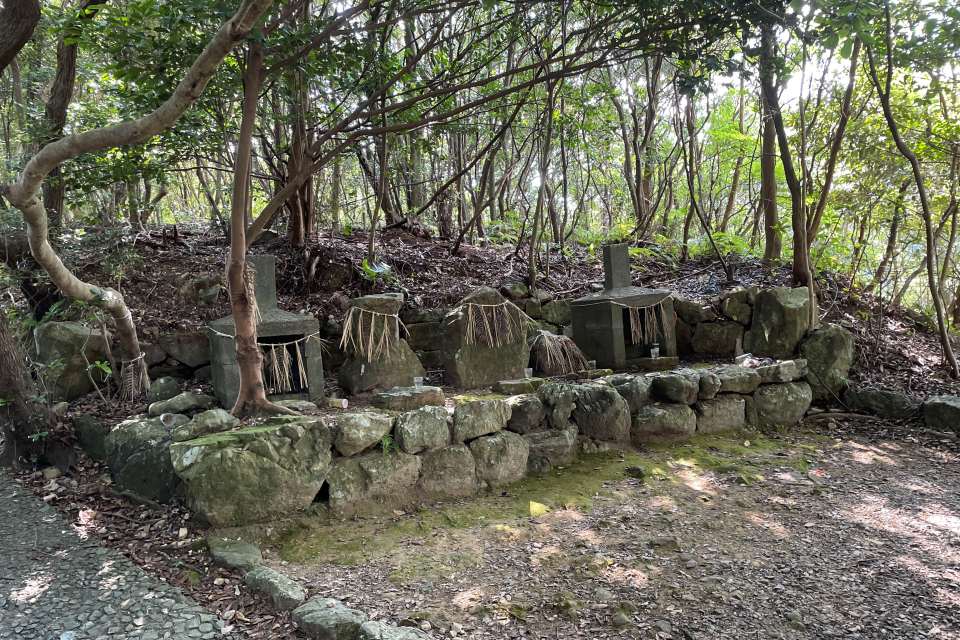
Ise-Shima National Park is well known as the home of the Grand Shrine at Ise (Ise Jingu), but the “Shima” end of the park has a magical destination of its own: Ago Bay. Located 25 km southeast of Ise, Ago Bay has an intricate ria coastline and dozens of tiny islands, making it a sight unlike any other in Japan. The best way to see it is from Yokoyama Observatory, a network of walking trails and viewing decks on the hills just northwest of the bay.
-
01
Getting to Yokoyama Observatory
The closest train station to Yokoyama Observatory is Shima-Yokoyama Station on the Kintetsu Shima line. The observatory area is about 2.5 kilometers west of the station, so in addition to the taxi stands and bicycle rental places near the station, simply walking there is an option. One popular route is actually a section of the Kinki Nature Trail, which crisscrosses the entire Kansai region.
At the observatory, your first stop should be the Yokoyama Visitor Center. As well as exhibits about Ise-Shima National Park’s natural and cultural history, the visitor center also has the latest information about conditions on the Yokoyama Observatory trails. -
02
Tenkū Cafe Terrace
Next to the visitor center is a stone staircase that leads to one of the observatory’s main attractions: Yokoyama Tenkū Cafe Terrace, which offers panoramic views of Ago Bay from 140 meters above sea level. The bay was formerly an above-water landscape of hills and valleys before being submerged at the end of the last glacial period. The result is the fascinating, fractal-like ria coastline and countless tiny islands. From Yokoyama Tenkū Cafe Terrace, this is revealed in all its glory.
If you can tear your eyes away from the bay, the terrace also offers fine views of the forested hillsides. Partly to the warm climate, the foliage is mainly broadleaf evergreen trees—particularly ubame-gashi oak—which change subtly in color and texture throughout the year.![Photo: Shima City Tourism Association]()
Photo: Shima City Tourism Association
Just above the terrace is a cafe offering snacks and drinks, as well as a place to sit and enjoy the view along with these refreshments. The terrace itself, however, is open 24 hours a day—you can drop by to watch the sun rise over the bay, or visit in the evening and watch the city of Shima light up as night falls.
![Panorama from the terrace of Ago Bay just after sunrise]()
Panorama from the terrace of Ago Bay just after sunrise
-
03
Walking Paths and Viewing Decks
Above the Tenkū Cafe Terrace is a pleasant network of walking paths and viewing decks that can be toured in half an hour or so. The Komorebi (“Sunlight through the trees”) Terrace is at the same elevation as the terrace and is comfortably shady in summer. The Soyokaze (“Pleasant Breeze”) Terrace is a little higher at 168 meters, and enjoys brisk breezes off the bay. Not far from the Soyokaze Terrace are Nagora no Uki-ishi, or “Floating stones of Nagora,” which are said to have been retrieved from the sea and carried up the mountain around a hundred years ago on instructions received in a dream.
Nagora no Uki-ishi
The highest part of the Yokoyama Observatory is the Miharashi View Point at 180 meters above sea level. Nearby is the Mikimoto Kokichi Memorial, which celebrates the founder of the Mikimoto pearl company. Mikimoto created the first successful commercial pearl farming operation in Ago Bay.
The forests of Yokoyama were traditionally what is known as a satoyama—an area tended by humans to meet the needs of the local human community. (Incidentally, the bay is considered a satoumi, a marine version of the same concept.) The most common tree is the ubame-gashi oak, which has been used to make hard charcoal for many centuries. Other distinctive flora of the Yokoyama area include the yamamomo (red bayberry), which bears fruit in early summer and the koba-no-mitsuba-tsutsuji (three-leafed azalea), which has vivid pink blossoms from April to May.The vast forests that surround the Ago Bay
Those interested a longer walk might like to try the 1.1 kilometer hike along the Kinki Nature Trail from the Miharashi View Point to Mount Sengen View Point. Though technically outside the Yokoyama Observatory area, the Mount Sengen View Point is the highest point in the local hills, at 203 meters above sea level.
For a slightly easier but still leafier option, make your way down from Miharashi View Point through Sozo-no-Mori Yokoyama, an area used for research, recreation, and conservation. It reaches all the way down to just beside the Yokoyama Visitor Center, and even includes a cherry blossom grove with almost a hundred trees.![Sozo-no-Mori]()
Sozo-no-Mori
Accessibility Note: Yokoyama Tenkū Cafe Terrace is designed for full accessibility, with wheelchair-accessible parking spaces in the nearby parking lot and slopes from the lot to the terrace itself. The wheelchair-accessible area extends as far as Komorebi Terrace at the same elevation.
- Yokoyama Observatory
-
4.5
401 Reviews -
-
- Mie Pref. Shimashi Agochougata 875-20
-
-
-
- 0599440567
-
-
-
- [Yokoyama Video Center Mirad…
-
View All






 Go here
Go here





